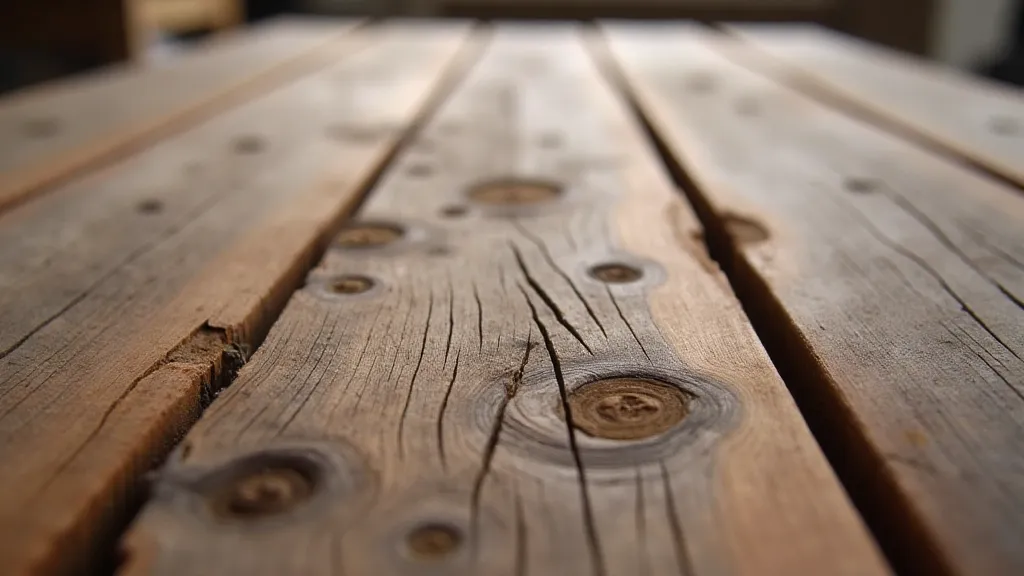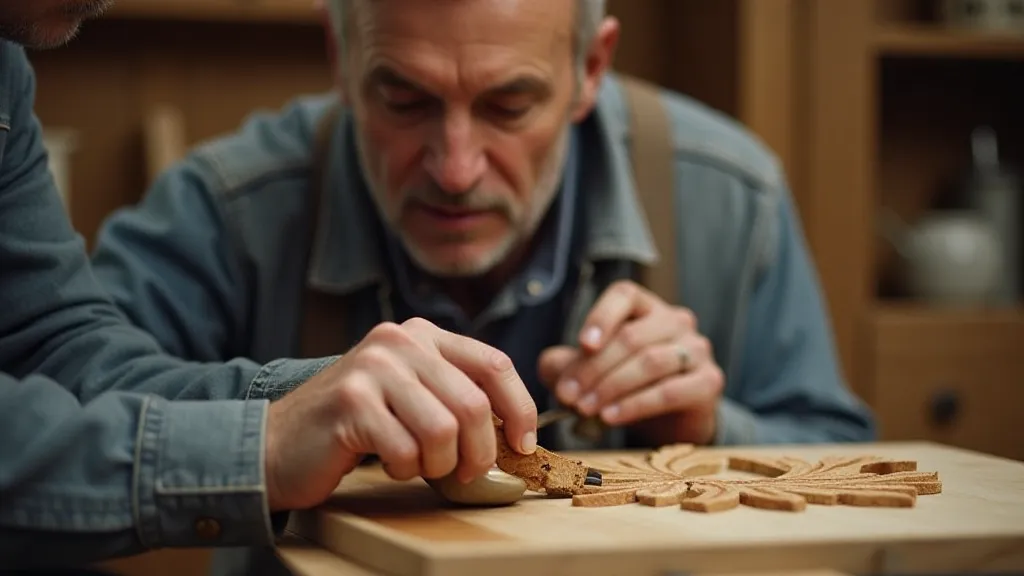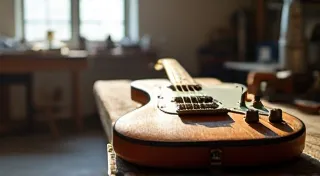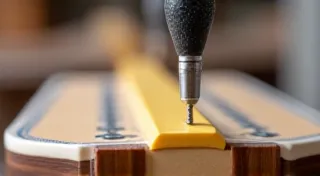The Wood's Memory: Echoes of the Forest in a Hand-Built Instrument
There’s a peculiar solace found in the scent of old wood. It’s more than just a smell; it’s a whisper of time, a faint echo of the life it once lived. When I first started building electric guitars, I approached it purely as a technical challenge: how to shape, join, and finish wood to create a functional and, hopefully, beautiful instrument. But as I worked with the material, I began to understand that it was so much more than just an inert substance. It possesses a memory, a history imprinted within its very fibers – a quality that profoundly impacts the final voice of the guitar.

The Forest’s Legacy
Think about it. Every piece of wood used in a guitar began its life as a towering tree, reaching for the sun, drinking in the rain, weathering storms. It was part of a complex ecosystem, a living tapestry woven with the lives of countless creatures. The sun's rays imprinted patterns of growth, the wind shaped its form, the soil nourished its roots. These experiences aren't erased when a tree is felled; they remain subtly encoded within the wood's cellular structure. This is not merely romanticism; it’s a matter of physics and biology. The density of the wood, the way it resonates, even the color – all are influenced by these environmental factors.
My grandfather was a carpenter, and I spent countless hours watching him work with wood. He never treated it casually. He spoke to it, almost, carefully selecting each piece, respecting its grain, its imperfections. He used to say, “You have to listen to the wood, boy. It’s telling you what it wants to be.” At the time, I thought he was being sentimental. Now, I understand. It's not about forcing your will onto the wood, but collaborating with it, understanding its inherent tendencies.
Sustainable Sourcing: A Builder's Responsibility
The ethical dimension of guitar building cannot be ignored. The demand for tonewoods – mahogany, rosewood, maple – has led to unsustainable logging practices, threatening forests and the delicate ecosystems they support. As builders, we have a responsibility to be mindful of where our materials come from. Opting for reclaimed wood, sustainably harvested timber certified by organizations like the Forest Stewardship Council (FSC), or exploring alternative, less-threatened species like poplar or ash, are vital steps. Choosing these options is not just an environmental choice; it's a reflection of our respect for the craft and the source of our materials.
I once built a guitar using reclaimed barn wood—old-growth pine that had stood for over a century. The wood carried the scent of hay and dust, a tangible connection to the history of the farm it had sheltered. The resulting guitar had a warmth and resonance unlike any other I’m familiar with. It felt like the wood itself was singing a song of remembrance.
The Concept of “Wood Memory”
The idea that wood possesses a “memory” is not scientifically quantifiable in a precise sense, but it speaks to a deeper understanding of how wood’s history affects its acoustic properties. Consider slow-growth wood, for example. Because the growth rings are closer together, the fibers are denser and more tightly packed, resulting in a board that tends to be stiffer and resonate differently compared to fast-growth wood. Similarly, wood that has been seasoned—allowed to dry naturally—over many years tends to be more stable and resonant. This is because the internal stresses that build up during the growth process are gradually released.
There’s a fascinating parallel with antique accordions. The wood used in the accordion’s case, often rosewood or mahogany, has aged and stabilized over decades of use, absorbing the vibrations of countless performances. The result is a warmth and richness of tone that is almost impossible to replicate with new materials. Similarly, the bellows, often made of cane, have developed their own unique voicing through years of use. The echoes of those past melodies linger within the instrument, creating an emotional connection that transcends mere functionality.
Think of the wood's history as a kind of “preload” – a predisposition to vibrate in certain ways based on how it grew and dried. As builders, we’re not just shaping wood; we’re revealing what’s already latent within it.
Respecting the Material’s Voice
The truly skilled builder doesn't impose their vision onto the wood; they listen to it. This means paying attention to the grain, the density, the color, and even the smell. It means embracing imperfections – knots, mineral streaks, and small cracks – as character marks, rather than flaws to be eliminated. It means selecting cuts of wood that highlight the inherent beauty of the grain. These details aren't just aesthetic choices; they’re a reflection of the builder’s respect for the material.

Finishing the guitar is another crucial step in revealing the wood’s voice. A thick, glossy finish can mask the wood's natural beauty and dampen its resonance. A thinner, more breathable finish, such as a French polish or a thin layer of lacquer, allows the wood to “breathe” and allows its true character to shine through. The finish should enhance the wood’s beauty, not obscure it.
Building a guitar is more than just a technical exercise. It's an act of collaboration—a partnership between the builder and the wood. It’s about honoring the history of the forest, respecting the material’s inherent voice, and creating an instrument that resonates with both beauty and soul. It’s a humbling process, but the rewards—the satisfaction of creating something beautiful and the connection to the natural world—are immeasurable. The guitar isn’s just an instrument; it’s a testament to the enduring power and beauty of the wood’s memory.





